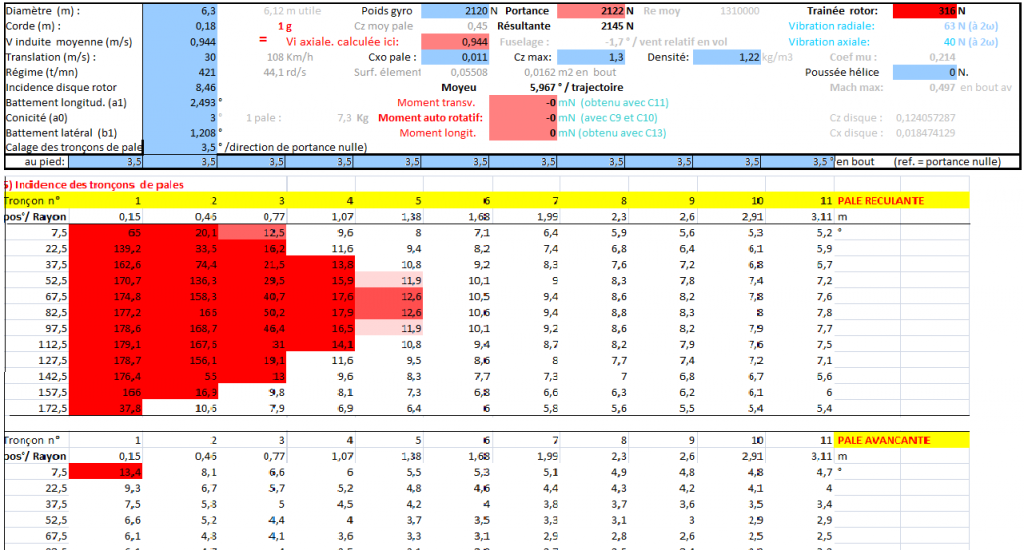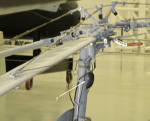Does your calculation indicate any stalled regions?
How do you detect them and how are they treated in the calculation?
Does your calculation use two dimensional profile data?
Which induced velocity distribution do you use around the rotor disk?
How is the torsional deformation taken into account?
In EXCEL, spreadsheet of eleven columns, eleven blade elements were analyzed every 15 ° of rotation (24 lines). For each of these sections and in each of these positions were calculated:
- Their air speeds taken from the direction of the chord (Table 1),
- The coefficient of local induced velocity normal to the disk (Table 2)
- The axial component of the flow velocity through the disk (Table 3)
- Their Angle of attack (Table 4)
- Their CL, linked to the A.o.A , taking into account the stall. The section 11 is assumed halved because loss in tip(Table 5)
- The induced local flow (Table 6)
- Their lift, linked to the CL. (Table 7)
- Their CD, taking into account their CL, including post-stall (Table 8)
- Their drag (Table 9)
- The angle of the resultant relatively to tip plane (Table 10)
- The magnitude of resultant (Table 11)
- Their rotation torque in tip plane (Table 12) and their sum.
- Their flapping torque (Table 13) and their sum.
- Their axial component (Table 14) and their sum.
- The radial component (Table 15) was added to observe the vibrational component of the drag.
Each table uses the input data and those obtained in the preceding tables. The input data is in the blue boxes and are corrected gradually until the desired total lift at the same time that the cancellation of torque. Similarly, longitudinal flapping angles (a1) and transverse (b1) are adjusted to obtain a null transverse and longitudinal moment.
Does my calculation indicate any stalled regions?
Yes, comparing table #5 value with limit corresponding to input "CL max"
How are they treated in the calculation?
Post stall, CL is assumed 2,2. SIN (i). COS (i)
and CD is assumed 2 SIN^2 (i)
Does my calculation use two dimensional profile data?
No. Just input CD min. added to induced CD taking into account the aspect ratio of the blade.
Which induced velocity distribution I use around the rotor disk?
Average Vi is multiplyed by the coefficient: 1 + (r/R COS(alfa). COS(psi))
How is the torsional deformation taken into account?
Torsional law is eventualy added to corrected the local pitch setting (input data in the head of the eleven columns). Cyclic deformations are not treated.
Example (Input in blue case):








